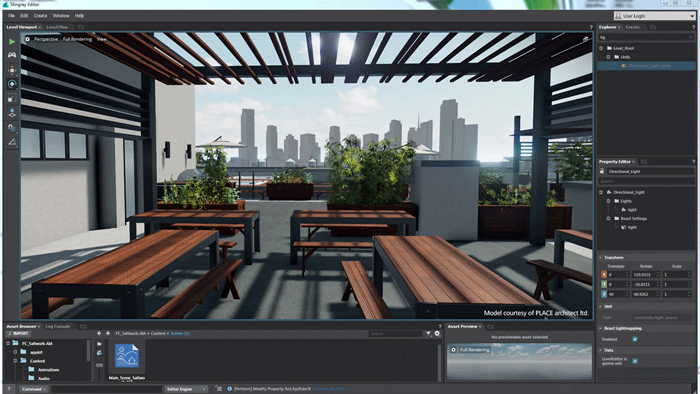Real time design visualisation software features tight integration with 3ds Max and a workflow from Revit.
Autodesk has been extolling the virtues of using 3D games engines for real-time design visualization for some years now. Last summer it put its money where its mouth is with the acquisition of Bitsquid, the Stockholm-based developer whose games engine supports Windows, iOS, Android and many of the major consoles.
One year on and we are now seeing the first fruits of this purchase with Autodesk unveiling Stingray, a games engine that lets users walk through designed spaces in a fully interactive, real-time environment.

As one might expect the natural partner for Autodesk Stingray is Autodesk 3ds Max 2016. Thanks to a live link between the two tools, any changes made in 3ds Max will be immediately reflected in the Stingray engine.
Giving Stingray more relevance to AEC professionals, Autodesk is also emphasising the established workflow between Autodesk Revit and Autodesk 3ds Max. It says that Revit models can be brought into 3ds Max, made ‘visually stunning’ and then imported to the Stingray engine to be made fully interactive.
Designers, owners and stakeholders will be able to explore “what if” design changes in a compelling visual environment, says Autodesk, not unlike a first person walk-about in a physical building. Visualising a building in this way will allow users to fully understand the scale, feel and experience of the building before construction starts, the company adds.
“We are opening a new door in the way buildings will be designed now and in the future that allows a live, interactive connection to designs,” said Amar Hanspal, Senior Vice President, Autodesk. “Imagine being able to meet your stakeholders for a tour of your building design model in a virtual space while collaborating to inform the design process. We are excited about this technology as it will help enable better decisions to be made prior to construction, where it gets really expensive to make changes.”
If you enjoyed this article, subscribe to AEC Magazine for FREE






